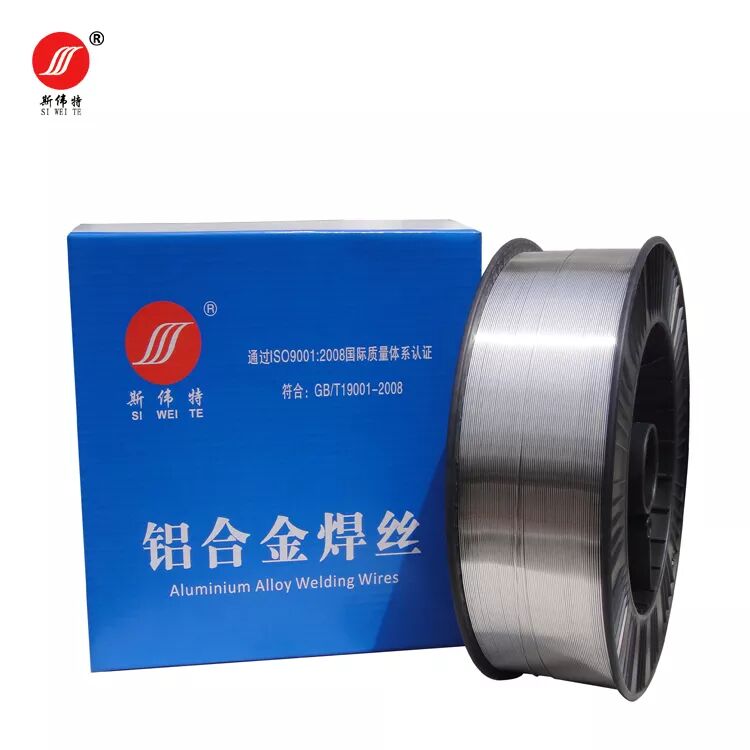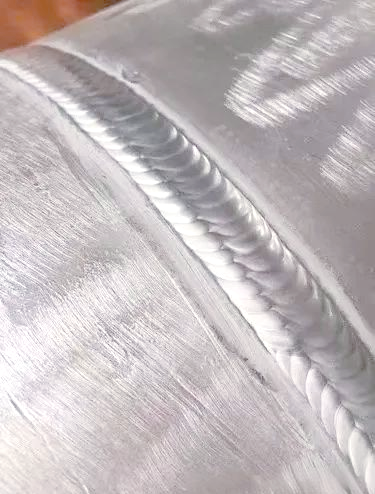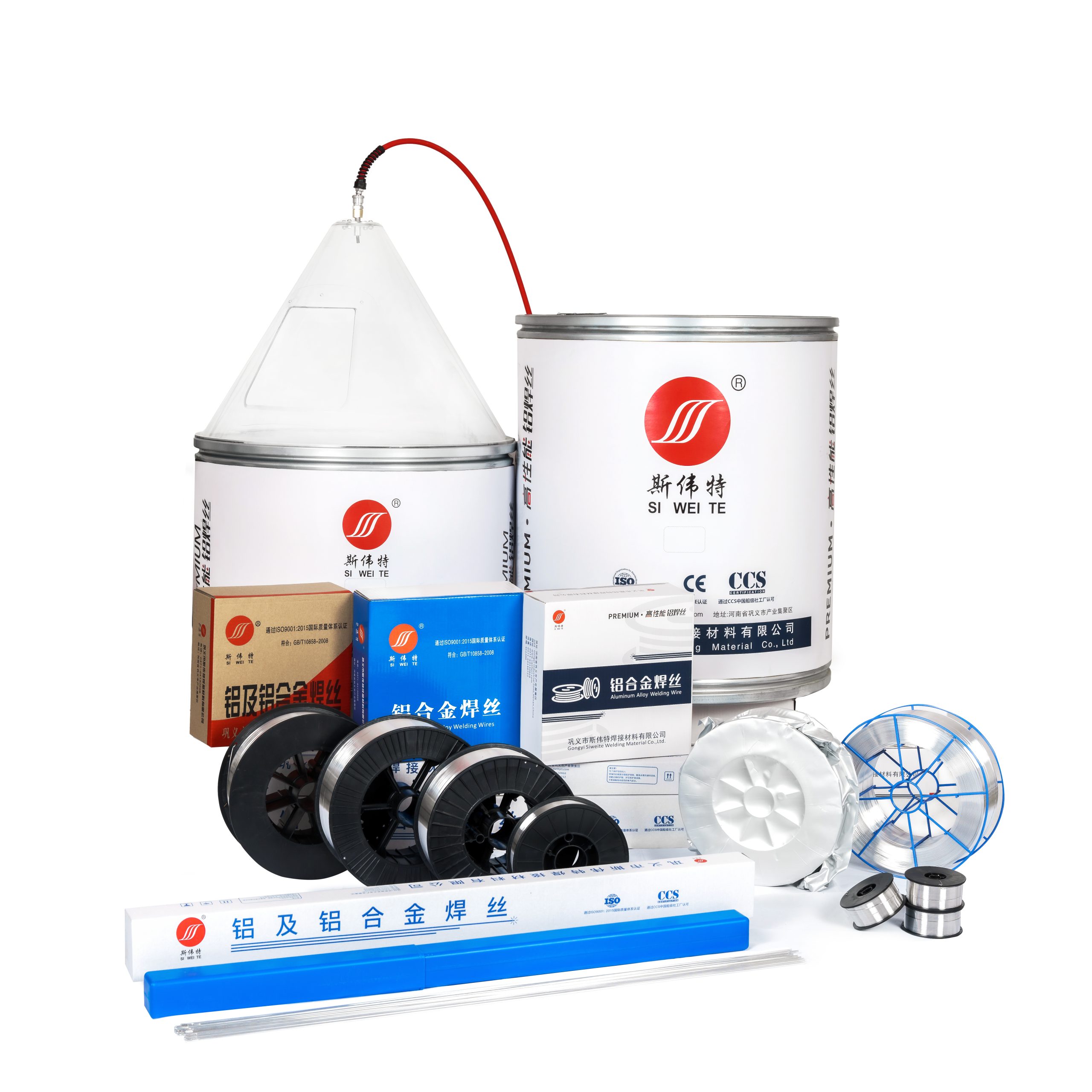Aluminum’s unique properties—high thermal conductivity, a tough oxide layer, and low melting point—make welding challenging. The choice between pulse and non-pulse modes (for both TIG and MIG welding) directly impacts weld quality, efficiency, and defect rates. As a trusted aluminum welding wire manufacturer, we’re breaking down how each mode works for aluminum, plus how to pair them with the right wire.
Pulse vs Non-Pulse: Key Differences for Aluminum Welding
Both TIG (tungsten inert gas) and MIG (metal inert gas) welding offer pulse and non-pulse options, but their strengths vary by application.
1. Non-Pulse Welding (Constant Current/Voltage)
Non-pulse mode delivers steady current (TIG) or voltage (MIG), making it simple to operate but less flexible for aluminum’s needs.
- Non-Pulse TIG: Ideal for thick aluminum plates (≥3mm) where high, consistent heat ensures full penetration. However, it risks burn-through on thin sheets (≤2mm) and creates larger heat-affected zones (HAZ), leading to more distortion. Welds often have a dark, oxidized surface requiring grinding.
- Non-Pulse MIG: Faster than non-pulse TIG for medium-thick aluminum (3-8mm) but produces more splatter. The constant wire feed can cause “dripping” in thin aluminum, and the high heat input increases porosity—especially with low-quality aluminum welding wire.
2. Pulse Welding (Cycling Current/Voltage)
Pulse mode alternates between two levels: peak (high power, for melting) and base (low power, for cooling/stabilizing). This cycling solves aluminum’s biggest welding pain points.
- Pulse TIG: Perfect for thin aluminum (≤3mm) and precision parts (e.g., automotive components, aerospace parts). The peak current penetrates the oxide layer, while the base current cools the molten pool to prevent burn-through. It creates narrow HAZ, minimal distortion, and bright, clean welds that rarely need post-processing.
- Pulse MIG: A game-changer for medium-to-thick aluminum (2-10mm) that demands speed. Pulse MIG controls wire melting rate, reducing splatter by 50%+ compared to non-pulse MIG. It also minimizes porosity by stirring the molten pool, making it ideal for high-volume projects like aluminum frames or tanks.
How to Set Up Pulse Welding for Aluminum (TIG & MIG)
Proper parameter setup ensures pulse mode delivers its full benefits. Pair these settings with our low-porosity aluminum welding wire (ER4043, ER5356) for best results.
Pulse TIG Setup for Aluminum
- Polarity & Mode: Switch to AC polarity (critical for breaking aluminum’s oxide layer) and select “Pulse” mode.
- Peak Current: 60-120A (thin sheets: ≤3mm); 120-200A (thick sheets: ≥3mm).
- Base Current: 10-30A (1/5 to 1/3 of peak current) to maintain arc stability.
- Pulse Frequency: 50-100Hz (thin sheets, for dense ripples); 30-60Hz (thick sheets, for better fusion).
- Gas Timing: Pre-flow (3-5s), post-flow (5-7s) to protect against oxidation.
Pulse MIG Setup for Aluminum
- Mode & Wire Feed Speed (WFS): Select “Pulse MIG” and set WFS to 3-8 m/min (match to wire diameter: 1.0mm=3-5 m/min; 1.2mm=5-8 m/min).
- Peak Voltage/Current: 18-22V / 100-160A (thin sheets); 22-26V / 160-220A (thick sheets).
- Pulse Frequency: 80-150Hz (reduces splatter); lower to 50-80Hz for thicker sections.
- Duty Cycle: 30-40% (thin aluminum); 40-55% (thick aluminum) to control heat input.
Why Aluminum Welding Wire Matters for Pulse Mode
Even perfect pulse settings fail with low-quality wire. Our premium aluminum welding wire enhances pulse welding performance in three key ways:
- Low Porosity: High-purity aluminum (99.9%+) reduces gas bubbles in the molten pool—critical for pulse MIG’s fast welding speeds.
- Smooth Feeding: Consistent diameter and clean surface prevent jamming in pulse MIG guns, ensuring steady arc.
- Alloy Matching: ER4043 (general-purpose, good corrosion resistance) and ER5356 (high strength, ideal for structural aluminum) pair seamlessly with both pulse TIG and MIG.
Final Verdict: Pulse or Non-Pulse for Aluminum?
| Welding Type | Best For | Mode Recommendation |
|---|---|---|
| TIG | Thin aluminum (≤3mm), precision parts | Pulse (priority) |
| TIG | Thick aluminum (≥3mm), simple joints | Non-Pulse (cost-effective) |
| MIG | Medium-thick aluminum (2-10mm), high-volume | Pulse (reduces defects) |
| MIG | Thick aluminum (≥8mm), low-precision jobs | Non-Pulse (fast) |
For most aluminum welding projects—especially those requiring quality or precision—pulse mode (TIG or MIG) is the better choice. Pair it with high-quality aluminum welding wire to eliminate defects and boost productivity. Contact us today to find the right wire for your pulse welding setup.





